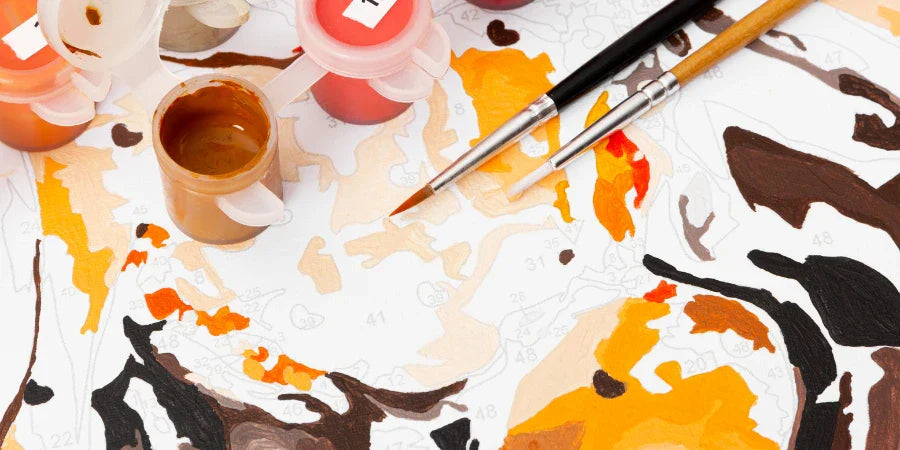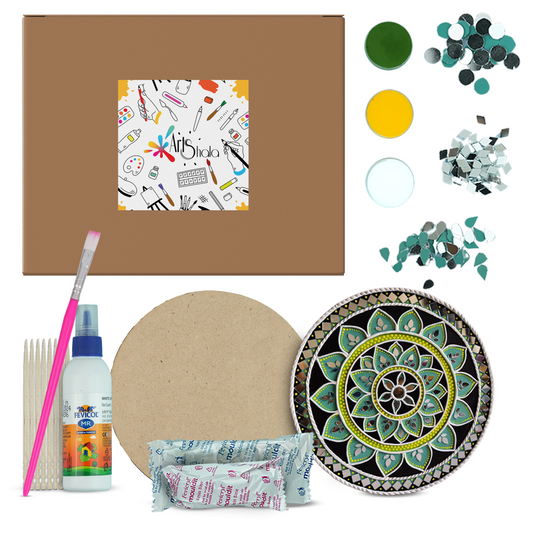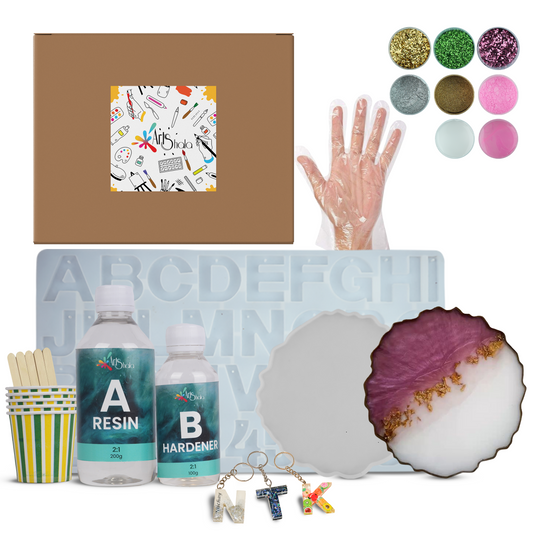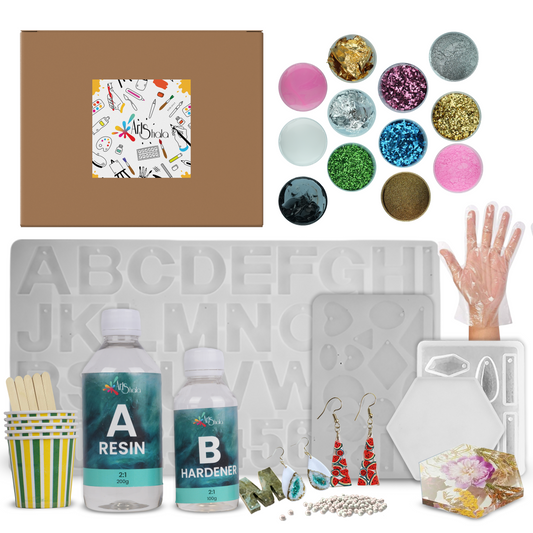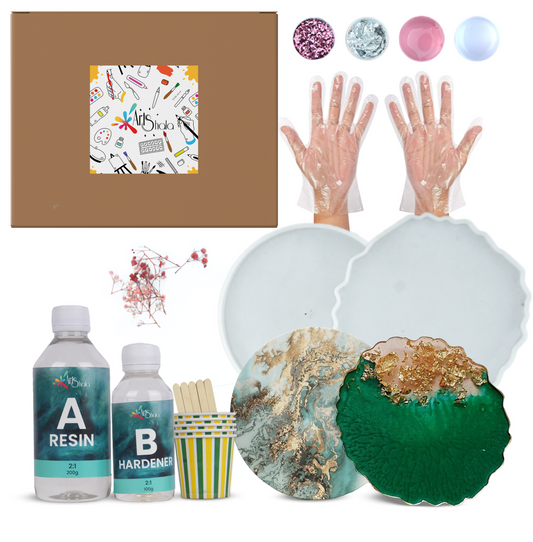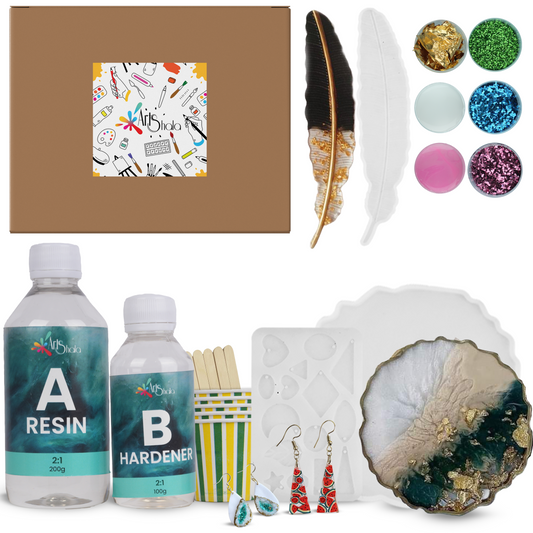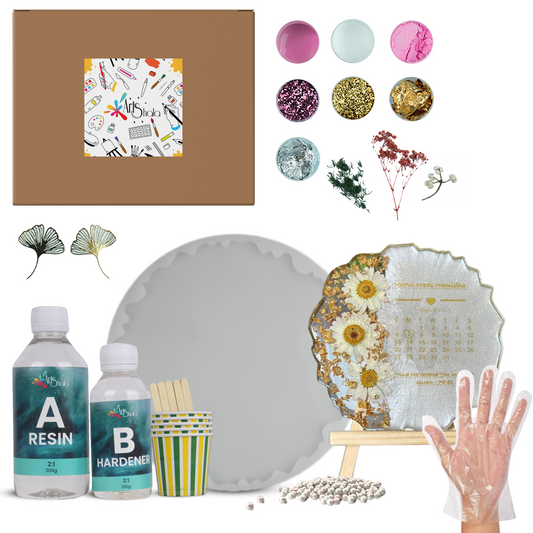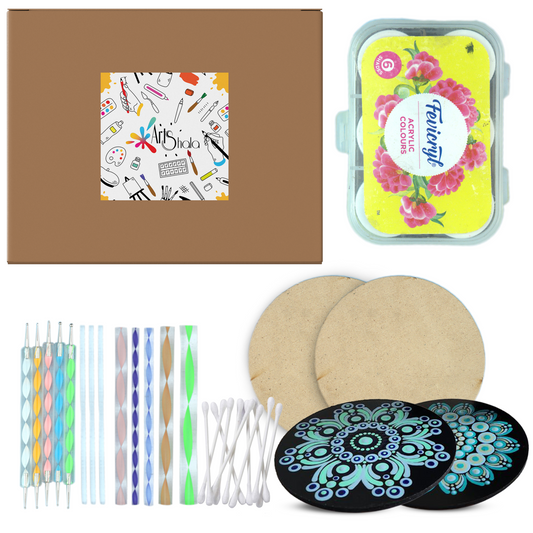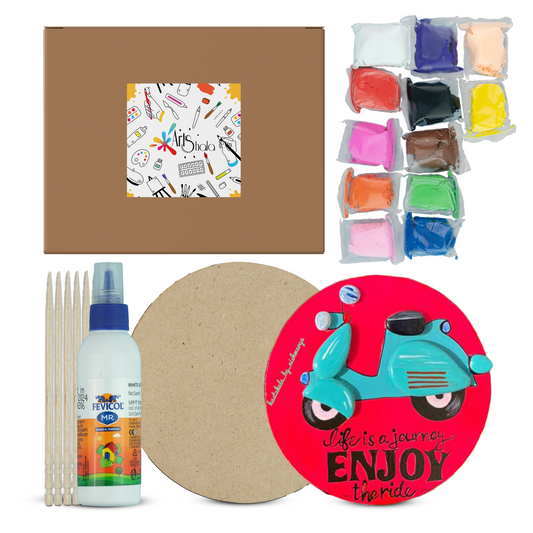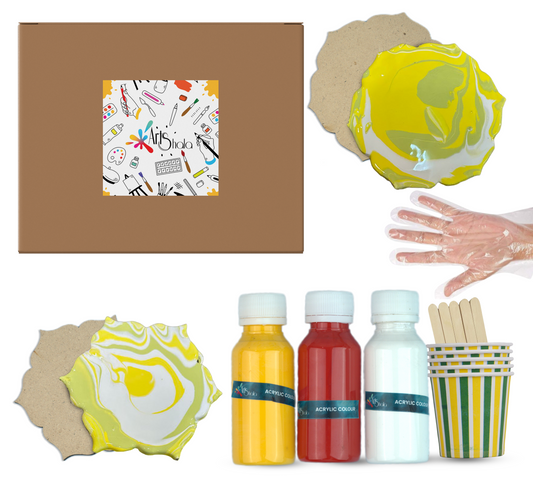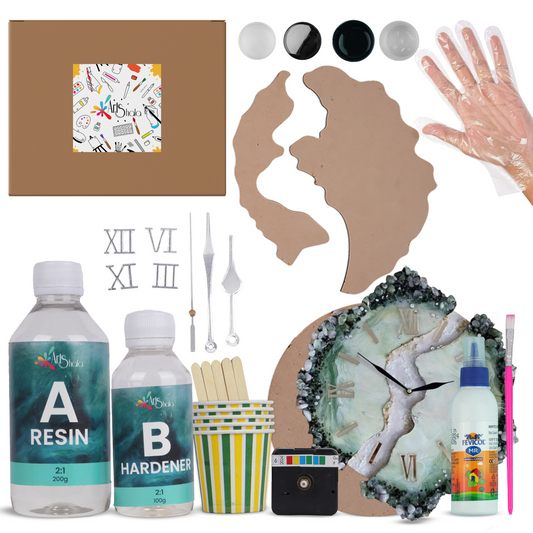Is It Possible to Put Acrylic Paints on an Unfinished Canvas?
Acrylic paints are a popular medium among artists due to their versatility, vibrant colours, and quick drying time. One common question is whether it is possible to apply acrylic paints directly onto an unfinished canvas, also known as raw canvas. This blog explores the feasibility of this practice, its implications for the artwork's longevity, and techniques to optimise the painting experience. To learn more about such techniques, enrol in an acrylic painting workshop.
Understanding Raw Canvas
Raw canvas refers to fabric not primed or treated with gesso. It is in its natural state, which can include various textures and absorbencies depending on the type of fabric used (such as cotton or linen). This unprimed state allows for a unique interaction between the paint and the canvas, which can benefit specific artistic techniques.
Benefits of Painting on Raw Canvas
-
Absorbency: Raw canvas is highly absorbent, allowing acrylic paints to soak into the fibres. This characteristic can create a beautiful stain-like effect, particularly appealing for techniques such as watercolour or wash applications. Artists like Helen Frankenthaler and Morris Lewis have famously utilised this effect in their works, demonstrating the potential for depth and texture that raw canvas can provide.
-
Texture: The texture of raw canvas can add a layer of interest to a painting. Artists can exploit the natural weave of the fabric to create dynamic surfaces that enhance their work's visual and tactile qualities.
-
Flexibility: Acrylic paints are well known for their flexibility. They can be applied in various ways, from thick impasto to thin washes, making them suitable for diverse artistic styles. Painting directly on raw canvas allows artists to experiment freely without the constraints of a primed surface.
Considerations When Painting on Raw Canvas
While there are many advantages to using raw canvas, there are also some considerations that artists should keep in mind:
-
Longevity: One of the primary concerns when painting on raw canvas is the longevity of the artwork. Unprimed canvas can be more susceptible to damage over time, mainly if the paint is not properly sealed. Acrylics protect as they dry to form a water-resistant film. Still, without a gesso layer, the canvas remains exposed to environmental elements that could impact its integrity.
-
Pooling of Pigment: Due to the absorbent nature of the raw canvas, there is a risk of pigment pooling, which can lead to uneven colour application. Artists should be mindful of how much paint they apply and may need to adjust their techniques to prevent this issue.
-
Surface Preparation: Although raw canvas is ready to paint on, testing the surface before starting is advisable. Droplets of water can be used to check absorbency; if the water beads up, the canvas may have a sizing that prevents proper paint adhesion. Applying a thin layer of acrylic flow release can help break the surface tension and improve paint application.
Techniques for Painting on Raw Canvas
To maximise the benefits of painting on raw canvas, artists can employ several techniques:
-
Stain Painting: This technique involves diluting acrylic paint with water or a medium to create a wash that the canvas can absorb. Acrylic flow release can enhance this process by reducing surface tension, allowing the paint to penetrate the fibres more effectively. This method is ideal for creating soft, transparent layers that build depth and richness in colour.
-
Layering: Acrylics dry quickly, which allows for rapid layering. Artists can apply multiple washes or glazes to achieve complex colour interactions. However, it is essential to confirm that each layer is dry before laying the next to avoid lifting previous applications.
-
Textural Techniques: Various tools, such as brushes, sponges, or palette knives, can create interesting textures on the raw canvas. The natural texture of the canvas can be accentuated by using thicker applications of paint or by scraping techniques that reveal the underlying fibres.
-
Sealing the Artwork: Once the painting is complete, artists should consider sealing it to protect it from environmental damage. While traditional varnishes can be applied, confirming that the paint is fully dry is important. Some artists prefer to use clear gesso as a final layer, which can provide a protective barrier while still allowing the texture of the raw canvas to show through.
Additional Tips for Working with Raw Canvas
To further enhance your experience when painting on raw canvas, consider the following tips:
-
Choose the Right Canvas: Different types of raw canvas have varying textures and weights. Experiment with different canvases to find one that suits your style. Heavier canvases can handle more paint, while lighter ones may be better for delicate washes.
-
Use Quality Acrylics: Invest in high-quality paints with better pigmentation and adhesion. Professional-grade acrylics often have superior lightfastness, ensuring that your artwork maintains its vibrancy over time.
-
Experiment with Mixed Media: Raw canvas can be an excellent surface for mixed media applications. Materials like charcoal, pastels, or collage elements can add depth and interest to your artwork.
-
Keep a Journal: Document your process and techniques when painting on raw canvas. This can help refine your approach and discover new methods that resonate with your artistic vision.
By embracing the unique properties of raw canvas and applying these tips, you can unlock new creative possibilities. Whether you’re an experienced artist or just beginning, painting on an unfinished canvas with acrylics can be a fulfilling and enriching experience. Happy painting!
Conclusion
Painting with acrylics on an unfinished canvas is entirely possible, and many artists find this practice rewarding. The unique characteristics of raw canvas can enhance the painting experience, allowing for creative exploration and experimentation. However, artists should be aware of the implications for longevity and take appropriate measures to protect their work.
By comprehending the advantages and challenges of working with raw canvas, artists can make informed decisions about their materials and techniques. Whether through stain painting, layering, or textural applications, acrylics on raw canvas offer a world of possibilities for artistic expression. Contact Us to learn more about this art form or visit Arts Shala’s website.


